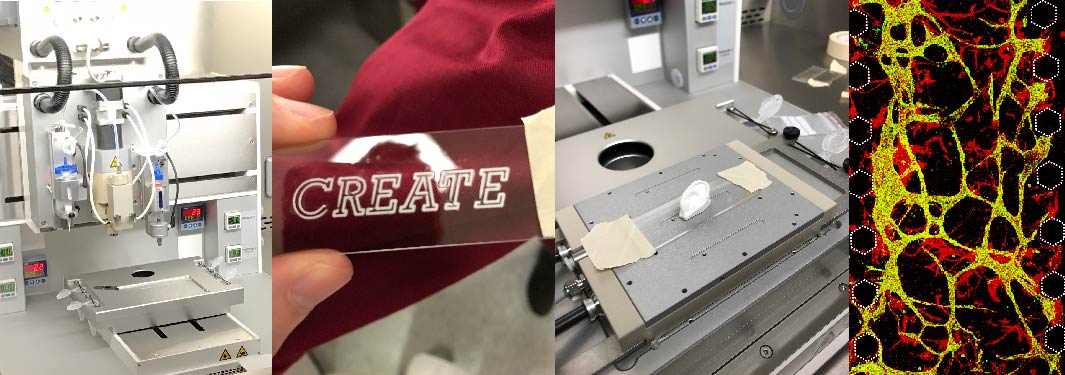CREATE Lab

The CRoss-InstitutE Advanced Tissue Engineering (CREATE) Lab is an established core facility dedicated to biofabrication of advanced 3D tissues and microfluidic devices. It houses state-of-the-art equipment for 3D bio-printing, microfabrication, and device analysis. The aim of the CREATE Lab is to support the development of next-generation 3D tissues and disease models for use in biomedical research and regenerative medicine.
As a cross-faculty initiative, the CREATE Lab was established through the Queen Mary Strategic Facilities Investment Fund and support from the Barts Charity. It is open to all Queen Mary researchers and external partners, with a view to promoting cutting-edge interdisciplinary research.
News
CREATE lab Twitter feed now active! Find out the latest news in the world of Biofabrication @QMCREATE.
The CREATE Lab participated in community engagement by showcasing organ-on-chip technology during the fifth Festival of Communities. We were joined by more than 5,600 local residents in Stepney Green Park, and by more than 2,400 visitors on the Sunday at Queen Mary’s Mile End campus. Find out more.
3D Discovery bio-printing system (regenHU)
The 3D Discovery Biosafety system is an advanced 3D printer enclosed within a class II biosafety cabinet. The system can be configured with up to 4 print heads, including syringe-based extrusion and micro-valve droplet dispensing. The system also provides temperature control for print heads and the printing platform, as well as a UV tool for photo-crosslinking and curing. Printer operation and construct design is controlled through the external computer and CAD/CAM software.
Micro-fabrication suite
The CREATE Lab houses a suite of equipment for photolithography and fabrication of microfluidic devices and micropatterned surfaces. Key pieces of equipment include a spin coater (SPIN150i, SPS), UV masking system (KUB-6, Kloe), hot plates, plasma oxidiser (Zepto, Henniker), and a thermoevaporator (Moorfield nanoPVD). In addition, the lab provides an optical profilometer (Profilm 3D, Filmetrics) for characterisation of microfabricated surfaces, and syringe pumps for introduction of dynamic fluid flow.
Filament based 3D printer Craftbot2
This equipment is suitable for printing PLA and ABS to produce custom sample holders/parts. The facility offers support in CAD drafting.